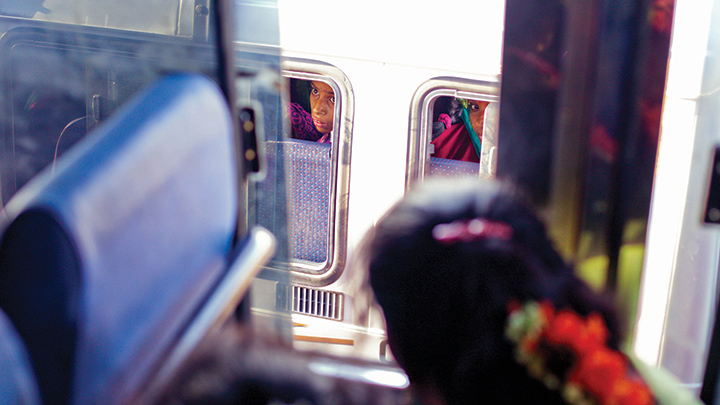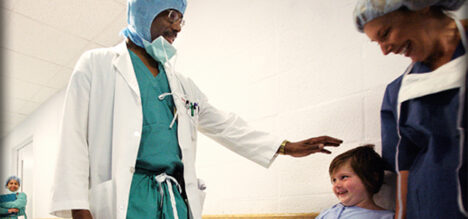Pandemic of pain
November 1, 2017

Violence, particularly against women, is an uncomfortable topic. And yet, it has become an increasingly talked about issue in Australia. Rightfully so.
Current statistics indicate that one in three women over the age of 15 has been a victim of physical or sexual violence by someone they know. Almost once a week a woman dies at the hands of a current or previous partner.1 While Australians generally believe that violence against women is wrong, the tendency to minimise disrespectful behaviours with sayings like “boys will be boys” or to blame victims with statements like “it takes two to tango” is part of the problem.1 And while domestic violence is the most obvious form of violence affecting women in Australia it is not the only form that violence takes.
Human trafficking, inequality and violations of women’s rights are all forms of violence. While girls and women living in developing countries generally experience such forms of violence more frequently, Australian women still face inequality, a root cause of these issues. Between 2007 and 2012, for example, a quarter of Australian women experienced sexual harassment in the workplace.1 Women continue to be underrepresented in leadership roles in both the public and private sectors, but are overrepresented in low-paid industries as part-time workers.1 And though it may come as no surprise that human trafficking is far too common in the developing world, Australia is not completely free from its grasp.
Human trafficking
According to the United Nations Office on Drugs and Crime (UNODC) and the Australian Federal Police (AFP), Australia is a destination country for human trafficking with victims arriving predominantly from Asian countries such as Thailand, the Philippines, Korea and Malaysia.2, 3 Lured by the promise of work, victims might not realise they have been deceived and are being exploited until they reach Australian shores.4
If traffickers can sneak victims into an isolated island nation like Australia then the amount of trafficked people within the same continent or even the same country is bound to be rampant. In fact, the majority of the world’s victims are trafficked domestically or within a subregion, and one in three victims are trafficked within their own country.3
Human trafficking targets the vulnerable. Women and children, particularly those in poverty, are common targets. UNODC estimates that 70 per cent of trafficking victims are female and the number of child victims has increased to nearly one-third of detected trafficking victims worldwide.3
As for subregional trafficking, India and Nepal are particularly affected. It’s reported that 7000 young women and girls are trafficked out of Nepal and into India every year.5 But the problem of trafficking isn’t the only issue affecting these two Asian countries.
Gender inequality
In Nepal, considerable steps have been taken to overcome gender inequality, particularly since Maoist factions gained the ascendancy in the nation’s parliament in 2008. Women can now transfer citizenship to their children; unmarried daughters have the same right to inherit land as sons do (without having to be over 35 years old as the previous law required); females are employed almost as often as males; women can legally divorce their husband on the grounds of rape; and a woman’s inability to bear children is no longer grounds for divorce. These legislative changes have been a wonderful step forward in improving the rights of women in Nepal. But the 2007 Interim Constitution, along with other policies, has failed to plug legislative loopholes and, even so, long-standing biases are hard to rebalance overnight. So while women have been granted equal inheritance rights this only applies while a woman is unmarried. Despite having the opportunity to work, women’s wages are significantly lower than their male counterparts. And a man’s word is still held in higher regard than a woman’s, making it difficult for women to win legal cases.6
Similar issues are plaguing India. A major concern there is the decline in the sex ratio of children under the age of seven. In 2001 statistics indicated that there were 927 girls for every 1000 boys in India. By 2011 the ratio had dropped to 914 girls for every 1000 boys.7 Infant mortality rates are higher for girls in almost all regions of India—official statistics are hard to obtain, but sex-selective abortion and female infanticide are frequently cited. Common practices such as underage marriage and domestic violence against women remain a large issue. Surprisingly, there is a high tolerance for such violence, with more than half of men and women excusing a man for beating his wife, highlighting the importance of raising awareness of women’s rights among both genders.7
Making a difference
Australian-based Christian charity Asian Aid initiates and supports projects that address gender inequality—a root cause of violence—in India and in Nepal.
Rupa and Chitra Acharya are a married couple working as Model Couple Campaigners (MCC) through an Asian Aid-funded program in western Nepal, addressing many of the deeply rooted and harmful traditional practices within their community.
There is a high level of gender and caste-based discrimination in their district—untouchability, child marriage and domestic violence are highly prevalent. Early marriage is one of the causes of a persistently high maternal mortality rate, with 12 per cent of girls marrying before they are 15 years old and 79 per cent of girls marrying before they turn 19.
As MCCs, Rupa and Chitra were initially faced with challenges. “It was very difficult for us to go against these practices as our family and the community stood opposed to our work,” they say. But over time, the couple noticed significant changes amongst community members. “At first we were shy and afraid of speaking to our family about women’s health issues, but now we can speak about women’s issues openly,” says Rupa.
In April they learned about a child marriage between two 16-year-olds. Both children had dropped out of school due to poverty. Rupa and Chitra went to the boy’s house and arranged a meeting with the girl’s family. In the discussion, the pair explained the consequences of child marriage and the punishments for child marriage offenders. They also provided separate counselling to the boy and the girl, and motivated them to complete their education and marry at the legal age of 20.
After long discussions and many objections it was agreed that each child would live with their own family; they would marry after reaching the legal age of 20 years. Rupa’s and Chitra’s intervention was possible only because of their connections in the community.
Asian Aid’s Advocacy Program helps prevent human trafficking while fighting for gender equality. Enabling girls to stay in school for longer, providing opportunities for women to learn vocational skills so that they can sustain themselves and their families, and raising awareness among boys and men about violence, trafficking, early marriage and child labour help grow girls and women to be strong for life.
Asian Aid is a child focused Christian organisation, a registered charity in Australia and a member of the Australian Council for International Development (ACFID). Sponsor a child or donate to a program at asianaid.org.au today.
1. https://www.respect.gov.au/the-issue/
2. https://www.afp.gov.au/what-we-do/crime-types/human-trafficking/
3. http://www.unodc.org/documents/data-and-analysis/glotip/GLOTIP_2014_full_report.pdf
4. http://www.aic.gov.au/publications/current%20series/tandi/441-460/tandi441.html
6. https://www.adb.org/sites/default/files/institutional-document/32237/cga-nep-2010.pdf









